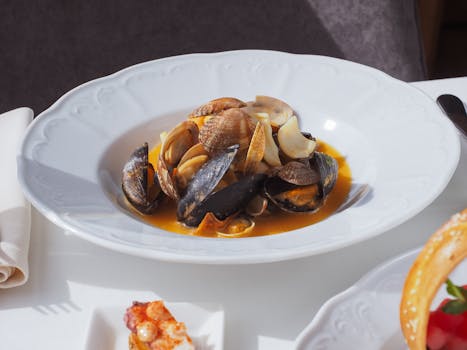Discover the Provencal Flavors: How to Cook an Authentic Bouillabaisse
Bouillabaisse is more than just a dish; it is a culinary tradition that embodies the essence of Provence, a region in the south of France known for its stunning landscapes, vibrant markets, and rich culinary heritage. This traditional fish stew, originating from the port city of Marseille, is a celebration of the Mediterranean’s bountiful seafood and the aromatic herbs and spices that define Provencal cuisine. In this article, we will explore the history of bouillabaisse, its key ingredients, and provide a detailed step-by-step guide to cooking this iconic dish at home.
The History of Bouillabaisse
Bouillabaisse has its roots in the humble kitchens of fishermen who would prepare a simple stew using the catch of the day. The name itself is derived from the French words “bouillir” (to boil) and “abaisser” (to reduce), reflecting the cooking method used to create this flavorful dish. Over the centuries, bouillabaisse has evolved from a rustic meal into a gourmet delicacy, often served in fine dining establishments.
In 1980, the French government even designated bouillabaisse as a “protected designation of origin,” ensuring that only fish caught in the Mediterranean and prepared in the traditional manner can be labeled as such. This highlights the dish’s cultural significance and the pride that the people of Provence take in their culinary traditions.
Key Ingredients for Authentic Bouillabaisse
To create an authentic bouillabaisse, it is essential to use fresh, high-quality ingredients. Here are the key components:
- Fish: A variety of fish is used, typically including white fish such as snapper, monkfish, and sea bass.
- Shellfish: Mussels, clams, and shrimp add depth and flavor to the stew.
- Broth: A rich broth made from fish bones, water, and aromatics is the foundation of the dish.
- Aromatics: Onions, leeks, tomatoes, garlic, and fennel are essential for building flavor.
- Herbs and Spices: Saffron, thyme, bay leaves, and orange zest are traditional flavor enhancers.
- Olive Oil: A staple in Provencal cooking, it adds richness and depth to the dish.
Step-by-Step Guide to Cooking Bouillabaisse
Now that we have covered the history and ingredients, let’s dive into the cooking process. Follow these steps to create your own authentic bouillabaisse:
Step 1: Prepare the Broth
Start by making a flavorful broth:
- In a large pot, heat 2 tablespoons of olive oil over medium heat.
- Add 1 chopped onion, 1 chopped leek, and 2 minced garlic cloves. Sauté until softened.
- Stir in 2 chopped tomatoes and cook for another 5 minutes.
- Add 1 liter of water, fish bones (from your chosen fish), 1 bay leaf, and a few sprigs of thyme.
- Bring to a boil, then reduce heat and simmer for 30 minutes. Strain the broth and set aside.
Step 2: Cook the Fish and Shellfish
Next, it’s time to add the seafood:
- In the same pot, heat another 2 tablespoons of olive oil.
- Add the strained broth back into the pot and bring to a gentle simmer.
- Add your choice of fish (about 600g total) cut into chunks and 300g of shellfish (mussels, clams, shrimp).
- Season with salt, pepper, and a pinch of saffron. Simmer for about 10-15 minutes until the fish is cooked through and the shellfish have opened.
Step 3: Serve with Rouille
Bouillabaisse is traditionally served with a side of rouille, a garlic and saffron mayonnaise:
- In a bowl, mix 1 egg yolk, 1 minced garlic clove, and a pinch of saffron.
- Slowly whisk in 100ml of olive oil until emulsified.
- Serve the bouillabaisse hot, garnished with fresh herbs and a dollop of rouille on crusty bread.
Conclusion
Cooking an authentic bouillabaisse is not just about following a recipe; it is about embracing the flavors and traditions of Provence. By using fresh ingredients and taking the time to prepare each component with care, you can create a dish that is both comforting and sophisticated. Whether enjoyed on a sunny terrace overlooking the Mediterranean or in the warmth of your own kitchen, bouillabaisse is a dish that brings people together and celebrates the rich culinary heritage of France. So gather your ingredients, invite friends over, and embark on a culinary journey to the heart of Provence!
